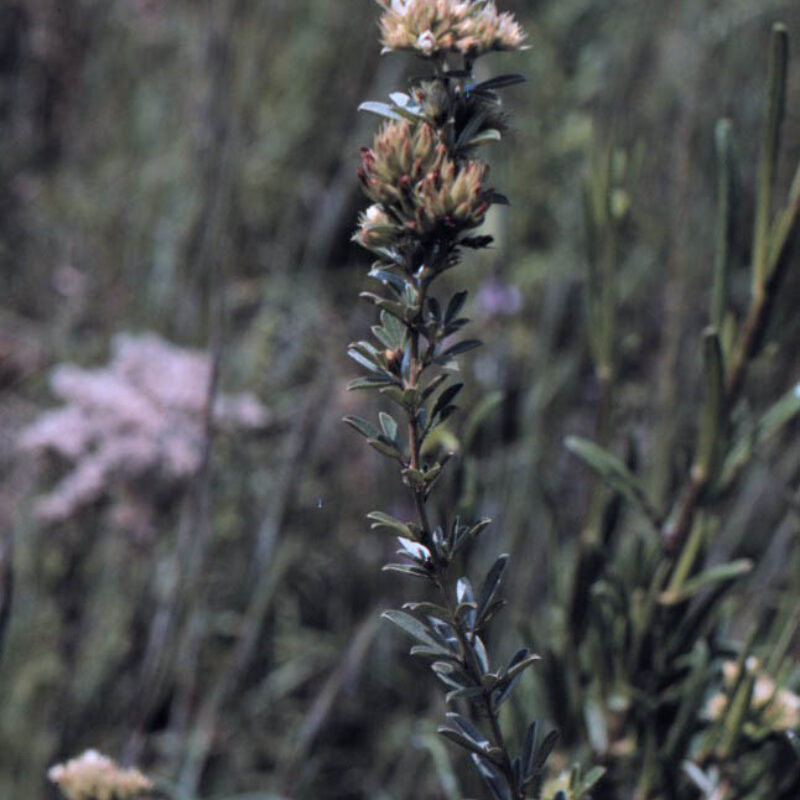Roundheaded BushcloverLespedeza capitata
Round-headed Bush Clover is a host plant for several different butterflies and moths. Its rigid stems and distinct seed heads turn a deep brown in the fall and stay standing through the winter.
USDA symbol: LECA8
General Information
| Plant Type | Forb |
|---|---|
| Height | 4 feet |
| Light Exposure | Sun, Part Sun |
| Soil Moisture | Dry |
| Bloom Color | White |

Tolerances
| Flooding / Inundation Tolerance | Moderate |
|---|---|
| General Resilience | 8 |
| Salt Tolerance | None |
| Stress Tolerance | Drought Tolerant, Fire Tolerant |
Pollinator Value: Very High
| Bloom Months | August to September |
|---|---|
| Larval Host of | Bees |
| Specific Pollinators Hosted | Megachile dakotensis |
| Pollinator Benefit | Insect Pollinated, Provides Nectar, Supports Specialists |
Project Planning
| Project Type | Erosion Control |
|---|---|
| Coefficient of Conservatism | 5 |
| Herbivore Sensitivity | Medium |
| Lifespan | Perennial |
| Rate of Spread | Slow |
| Soil Stabilization | Deep |
| Vegetative Reproduction | Absent |
Range
| County | Aitkin, Anoka, Benton, Blue Earth, Brown, Cass, Chippewa, Chisago, Clearwater, Cottonwood, Crow Wing, Dakota, Dodge, Faribault, Fillmore, Freeborn, Goodhue, Hennepin, Houston, Isanti, Jackson, Kandiyohi, Le Sueur, Lincoln, Lyon, McLeod, Mille Lacs, Morrison, Mower, Murray, Nicollet, Nobles, Olmsted, Otter Tail, Pine, Pipestone, Pope, Ramsey, Redwood, Renville, Rice, Sherburne, Stearns, Steele, Todd, Wabasha, Washington, Winona, Wright, Yellow Medicine |
|---|---|
| Ecoregion | Driftless Area, Lake Agassiz Plain, North Central Hardwood Forests, Northern Glaciated Plains, Northern Lakes and Forests, Northern Minnesota Wetlands, Western Cornbelt Plains |
| Approximate Eco Province | Eastern Broadleaf Forest, Laurentian Mixed Forest, Prairie Parkland, Tallgrass Aspen Parklands |
